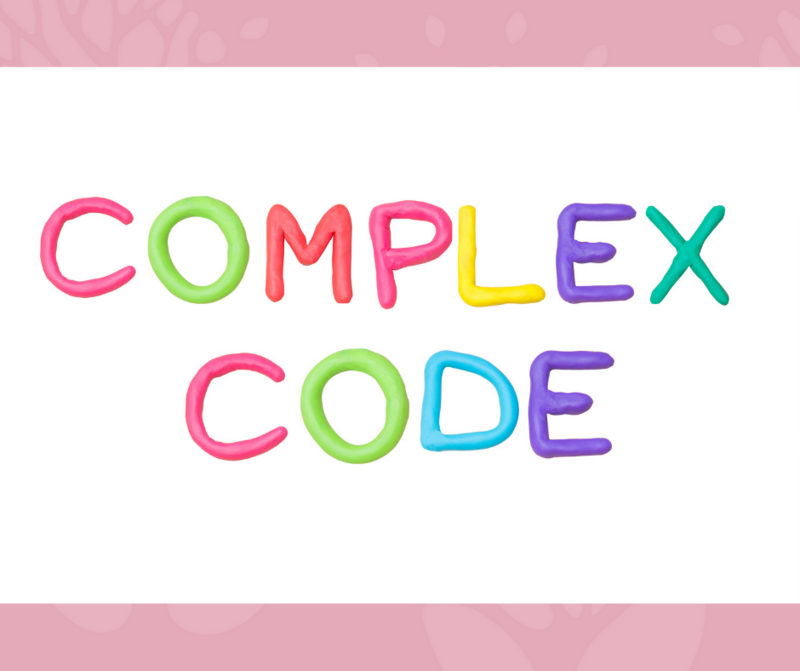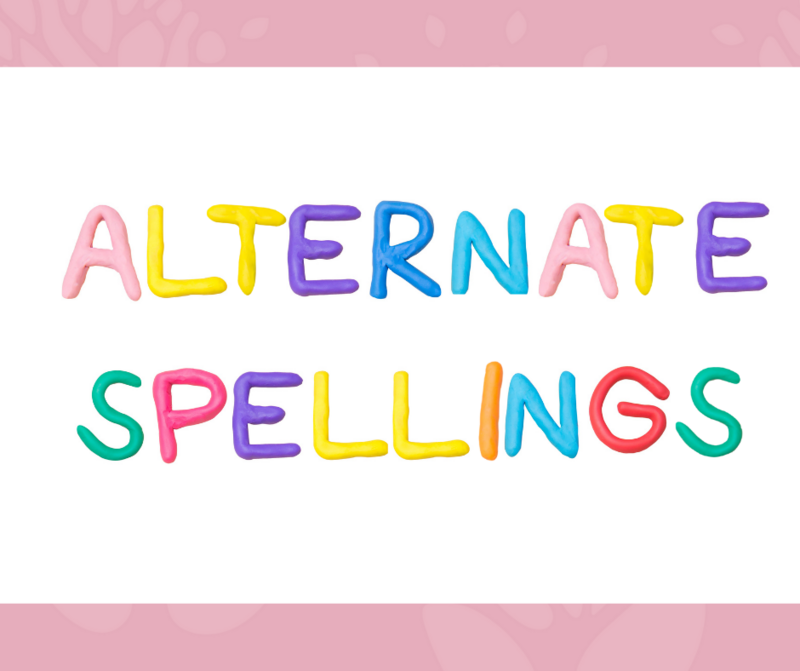Beyond Basic Phonics

As teachers seeking to work with the research evidence about reading and reading instruction, we acknowledge the Big Six Ideas of Reading and plan our classroom instruction accordingly. However, this post is not about incorporating all of those elements. Today I am writing about going broader and deeper with the phonics we are teaching and how we can help our Year 2 and 3 students understand the full complexity of the alphabetic principle and how words work. I will also discuss how we can bring morphology into the equation in a way that doesn’t overload our students or ourselves.
A systematic synthetic phonics approach involves teaching phoneme and grapheme correspondences and teaching students to apply that knowledge in the reading and spelling of words. The approach starts simply, with one-to-one correspondences of the ‘basic code’ and then builds up to include the extended or complex code. When it comes to the order of teaching phoneme/grapheme correspondences and how many ‘sounds’ to teach at once, there are different opinions and ideas out there. For me, I favour a ‘steady as she goes’ approach that allows our potentially struggling students to keep up, reducing the need for grouping and unnecessary Tier 2 intervention. As such, when I think about teaching phonics, I think in three phases of learning.
- The basic code – One representation of the ‘alphabet sounds’ including consonants and single letter short vowels. For most students, this will make up the majority of their Foundation Year instruction along with learning to read and write words with four and five phonemes in isolation and within sentences.

- The early complex code – one representation of the other phonemes of English is introduced. Once this is learned to mastery, some alternate spellings of long vowels are introduced including ‘split digraphs’. The beginning of flexibility with the code develops with students working with a limited number of alternate spellings of the phonemes (mostly vowels). Students begin to independently apply the understanding that one phoneme can be represented by more than one grapheme and to enable them to access this knowledge in their own reading and spelling.

- The late complex code – additional alternate spellings of both consonants and vowels are explicitly taught. Instruction at this point is focused on completing students’ knowledge of the most common representation of the phonemes of English and helping them to mentally arrange this information so that they can apply it to reading and spelling single and multisyllable words. This knowledge is used to read unfamiliar and more complex words in the increasingly complex texts that students are now able to access.

While I have outlined the phonics components above, it is, by no means, the end of the story. Morphology is a second area that is worth considering in your instruction. In the Foundation Year, you can easily introduce plural and past tense ‘s’ and the suffix ‘ing’ within your phonics lessons. Just pop these suffixes onto words once students can read the base words. You can also introduce the prefix ‘un’, which is perfectly regular and easy to sound out once students can read words with four and five phonemes. It isn’t necessary to have separate, in-depth lessons for morphology in the early years.
In Year 1, it is useful to continue to embed morphology in your phonics lessons. Adding suffixes such as past tense ‘ed’, ‘y’, ‘ly’, ‘er’ and ‘tion’ to words in your phonics lessons will help children develop the capacity to read multisyllable words and access more complex texts. This is also a point where you can differentiate your lessons. All students can be learning the grapheme ‘igh’. You can then direct word level reading and spelling for the class to reading single syllable words (high, sigh, night) and add the suffixes for your high-flyers who are reading for more (highly, sighed, nightly). Later, students will learn that this phoneme can also be represented by ‘i_e’ and ‘ie’, so that they enter Year 2 (or even the second half of year 1) able to read and write words with a range of representations for many phonemes.
The third phase is where the complexity comes in. The key to helping children really develop a grasp of the alphabetic principle, is not just to keep teaching more representations (although that’s important), but to work with and understand when and how to use them. It’s about students having enough knowledge that when you say, “Write down all the ways you know to spell the sound /ay/”, they can produce ay, ai, a, a_e on their own and when you show a grapheme such as ‘ow’ and say, “Write two words that use this grapheme for two different phonemes (sounds)”, students can write ‘cow’ and ‘grow’ and discuss with their partner that the ‘ow’ can be used for the phoneme /ou/ or the phoneme /oa/. However, spelling doesn’t end here.
Morphology (and other knowledge such as etymology) comes into play when we want to extend students’ reading and spelling skills. There are natural links between phonics, morphology and spelling. For example, the word bake uses a ‘split digraph’. If you want to add ‘s’ to write “He bakes cakes”, you just pop the ‘s’ on the end. But if you want to add ‘ing’ to write, “He is baking a cake”, there is a spelling guideline that helps us understand what we need to do. That is, when we add a vowel suffix to a word ending in ‘e’, we usually drop the ‘e’ and add the suffix – bake + ing = baking. It is this combination of phonics, morphology and spelling that helps children grasp the complexity of how our language works. Without this understanding, they are relying on rote memorisation, which we know doesn’t work that well for many of our students.
But how do you bring all of this together without making an overly complicated, confusing mess that leaves students scratching their heads? The answer lies in that ‘simple to complex’ approach that you have been applying the whole time. In order for our potential strugglers to keep up with their peers, we need to avoid throwing it at them and drowning them in details. As one teacher put it, “It’s like throwing hundreds and thousands at them and yelling, ‘catch!’” (Thanks Sam C). To avoid this learning chaos, we need to take students by the hand and lead them through learning to make these connections one step at a time.
via GIPHY
I couldn't find a GIF with hundreds and thousands, so here's one with salad. You get the idea.
As I was putting Reading Success in Action – Decoding 3 together, I carefully considered how we might achieve this. In the end, I came up with a five-day lesson sequence that gradually increases the complexity of content. For example, on day two of the sequence the teacher leads a word sort of words containing four representations of the phoneme, drawing students’ attention to the internal structure of the word. On day three, the students hear a list of words that contain two representations (the new one and one they already know) and put them in the ‘right column’. On the fourth day, they have words containing three representations (the new one and two they already know) and on the fifth day, all four representations that they have been taught. This gradual increase in complexity allows the teacher to continually monitor cognitive load and respond in the moment to student need. If the students can handle three representations, but get wobbly on the fourth, the teacher knows that more review and practice is needed.

And what about the morphology? Well, that’s taken care of too. Each unit has an optional spelling/morphology detour that involves words with the phoneme that is the current focus of the unit. That means that you can provide depth of spelling understanding while reinforcing and reviewing what has just been learned. Concepts are cycled through the book, meaning multiple opportunities to practice and develop skills and knowledge to mastery. For our students who aren’t fast lane learners, this provides multiple exposures and invaluable opportunities for practice. It also means that if you are a year three or four teacher wishing to provide some phonics instruction to your class, you can ensure that your lessons are suitable for the grade. Less common representations of phonemes are also mentioned so that you can include these and help students really broaden and deepen their knowledge. Teachers can draw from the level of knowledge that is most suitable for the students they are teaching and teach this at a pace that responds to student need. One group of students might master the /ay/ unit, including the morphology detour in a week, while another group may need 3 weeks to cover the same content. Pace isn’t about a preconceived timeline. It’s about the needs of the student.

All too often, phonics is discussed as the simple connecting of alphabet letters and their sounds, but there is so much more to it than this. Giving the students the gift of an approach that teaches the alphabetic principle fully and makes connections to morphology and spelling assists students to grow in both reading and spelling.
You can read more about and order your copy of Reading Success in Action 3 here.

 Jocelyn Seamer Education
Jocelyn Seamer Education
1 comment
Pace isn’t about a preconceived timeline. It’s about the needs of the student.
I like this very much.
Leave a comment